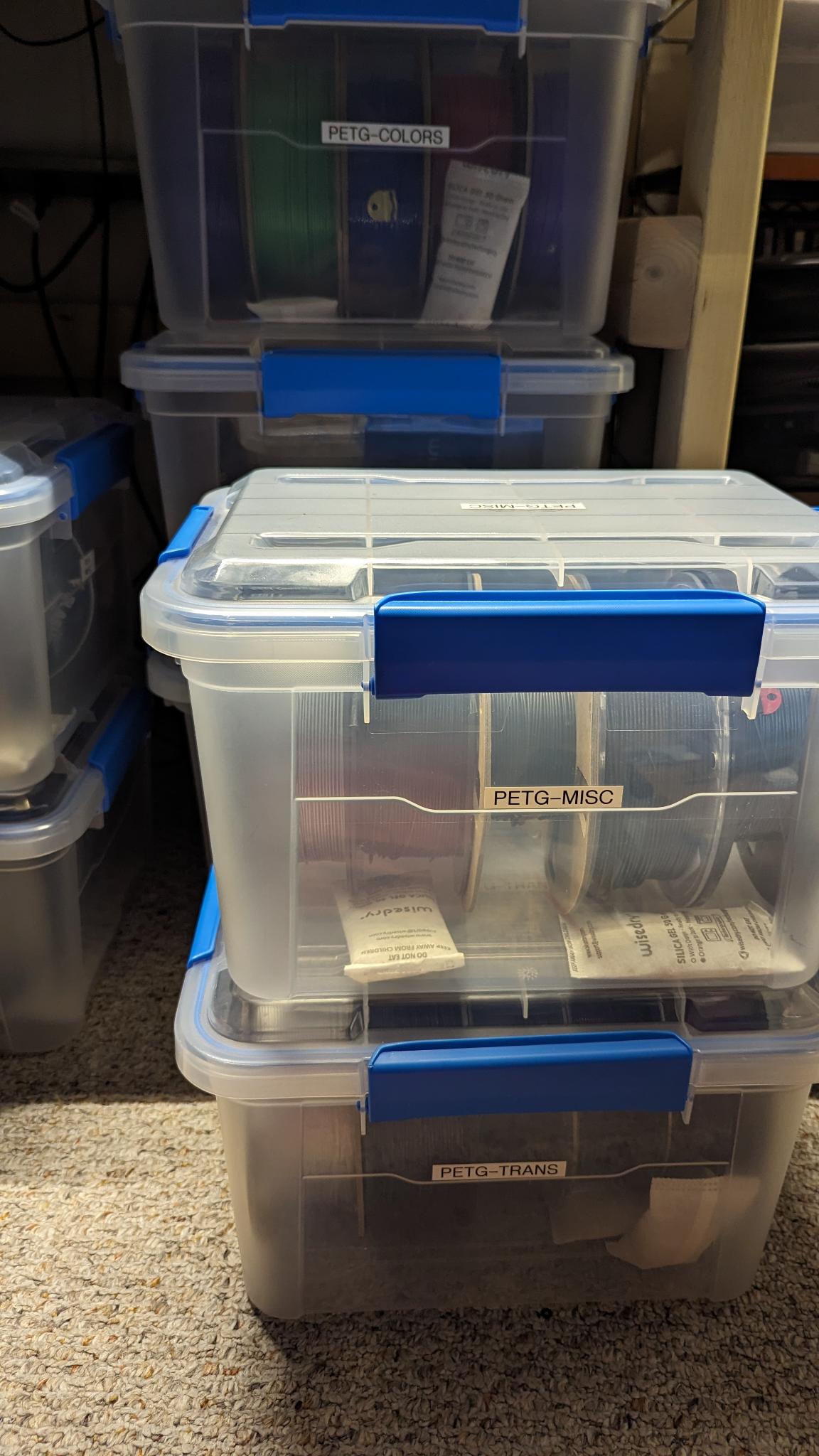Best Filament Container Solutions 3D printing enthusiasts know the struggle: keeping filament dry and dust-free is crucial. A top-notch filament container becomes a must-have for any serious hobbyist.
Every craft depends on the quality of its raw materials, and for those in the 3D printing world, filament is the cornerstone. Ensuring it remains in optimal condition is not just a matter of convenience, but a necessity for precision and quality in prints.
The best filament container not only preserves your filament but also extends its life, saving time and money in the long run. Choosing the right container can feel overwhelming with so many options available. It’s about more than just storage; it’s about maintaining the integrity of your filament against humidity, temperature fluctuations, and other environmental factors. This guide will help you navigate through the features that matter most, from airtight seals to desiccant holders, and everything in between. Whether you’re a seasoned professional or a beginner, finding the best filament container will elevate your 3D printing projects to the next level.

The Importance Of Filament Storage
The Importance of Filament Storage lies in its ability to preserve filament quality. Proper storage solutions are crucial for 3D printing enthusiasts and professionals alike. Filaments can degrade, impacting print quality and material properties. A best filament container shields filaments from harmful environmental factors.
Why Filament Quality Matters
Filaments are the lifeblood of 3D printing. They dictate the strength, flexibility, and appearance of printed items. High-quality filament leads to consistent prints. It reduces the risk of print failures. Thus, maintaining filament quality is paramount.
- Ensures dimensional accuracy of prints
- Avoids nozzle clogs that cause printer downtime
- Prevents weak structures due to poor layer adhesion
Risks Of Poor Storage
Poor storage exposes filaments to moisture, dust, and UV light. These elements can ruin filament integrity. When filaments absorb moisture, they can become brittle or swollen. This affects how they melt and extrude during printing.
| Storage Risk | Consequence |
|---|---|
| Moisture | Weakens filament; causes steam bubbles during printing |
| Dust | Leads to extruder clogs and defects in the print |
| UV Light | Degrades plastic; changes color and texture |
Proper storage in a sealed container with a desiccant maintains filament condition. It extends shelf life. It ensures reliable prints every time. Users save time and resources. They avoid reprinting failed jobs due to poor filament quality. Thus, investing in a quality filament container is a wise decision for any 3D printing setup.
Types Of Filament Containers
Let’s explore Types of Filament Containers. These containers keep filaments dry and clean. They are essential for quality 3D printing. There are three main types.
Vacuum Sealed Bags
Vacuum sealed bags are popular. They remove air and keep moisture out. Bags are easy to use and store. They are great for filament protection. You can reuse them too.
- Keep filaments dry.
- Easy to store.
- Reusable.
Airtight Storage Boxes
Airtight boxes are strong. They protect against moisture and dust. Boxes come in different sizes. You can see inside without opening them. They are good for organizing filaments.
- Strong protection.
- See-through designs.
- Organize easily.
Specialized Filament Canisters
Special canisters are made for filaments. They control humidity. Some even track filament use. These canisters are smart. They are best for serious 3D printing.
| Features | Benefits |
|---|---|
| Humidity control | Keeps filaments perfect. |
| Track use | Save filaments. |
Diy Versus Commercial Solutions
3D printing enthusiasts face a common challenge: storing filament correctly. The right container keeps moisture out and preserves filament quality. Let’s explore DIY and commercial storage solutions.
Crafting Your Own Storage
Building a DIY filament container means custom solutions. It’s cost-effective and can be fun. Consider these simple steps:
- Choose a box or bin that fits your filament spool.
- Seal it with gasket or weather stripping.
- Throw in desiccant packs to absorb moisture.
Use a hygrometer to monitor humidity levels inside the container.
Remember, precision and care are key for a successful DIY project.
Evaluating Pre-made Options
Commercial filament containers offer convenience. They come ready to use with features like:
- Sealed lids to lock out moisture.
- Desiccant compartments for humidity control.
- Transparent sides to view filament status.
| Feature | Benefit |
|---|---|
| Built-in Hygrometers | Easy humidity monitoring. |
| Durable Materials | Long-lasting protection. |
Quality and price vary, so choose based on need and budget.

Maintaining Optimal Storage Conditions
Storing 3D printing filament correctly is key for print quality. Filament containers play a vital role. They keep filaments dry and dust-free. Below are expert tips to maintain the perfect environment for your filament.
Controlling Humidity Levels
Humidity can ruin filament. It’s essential to keep it under control. Silica gel packs or desiccants in filament containers absorb moisture. Regular checks ensure they stay dry. Some containers have built-in hygrometers. They monitor humidity levels closely.
Temperature Considerations
Temperature swings affect filament properties. Ideal storage is cool and stable. Avoid places with direct sunlight or heat sources. This prevents filament from becoming brittle or deformed.
Long-term Storage Tips
- Seal filament when not in use. Air-tight bags or containers work best.
- Label containers with type and date of filament. This keeps track of usage and age.
- Store in a dark, non-humid place. Cabinets or closets away from windows are good spots.

Frequently Asked Questions
What Is The Best Filament Container For 3d Printing?
A filament container keeps 3D printing material dry and dust-free. Look for one with a seal and desiccant.
How Do You Keep Filament Dry During Storage?
Store filament in a container with a tight seal and use silica gel packs to absorb moisture.
Can Any Container Be Used For Filament Storage?
Not all containers are suitable. Choose ones that are airtight and can hold a desiccant.
Why Is Moisture Bad For 3d Printing Filament?
Moisture causes filament to bubble and break during printing, ruining print quality.
Conclusion
Choosing the right filament container is crucial for any 3D printing enthusiast. It keeps materials dry and dust-free, ensuring high-quality prints every time. Remember, durability and airtight seals are key factors. Consider the size, too — it should fit your spool perfectly.
With the options we’ve explored, finding a container that suits your needs is simple. Take care of your filament, and it will take care of your 3D printing projects. Now, go ahead and select the best storage solution for your filament to maintain its integrity.
Happy printing!

